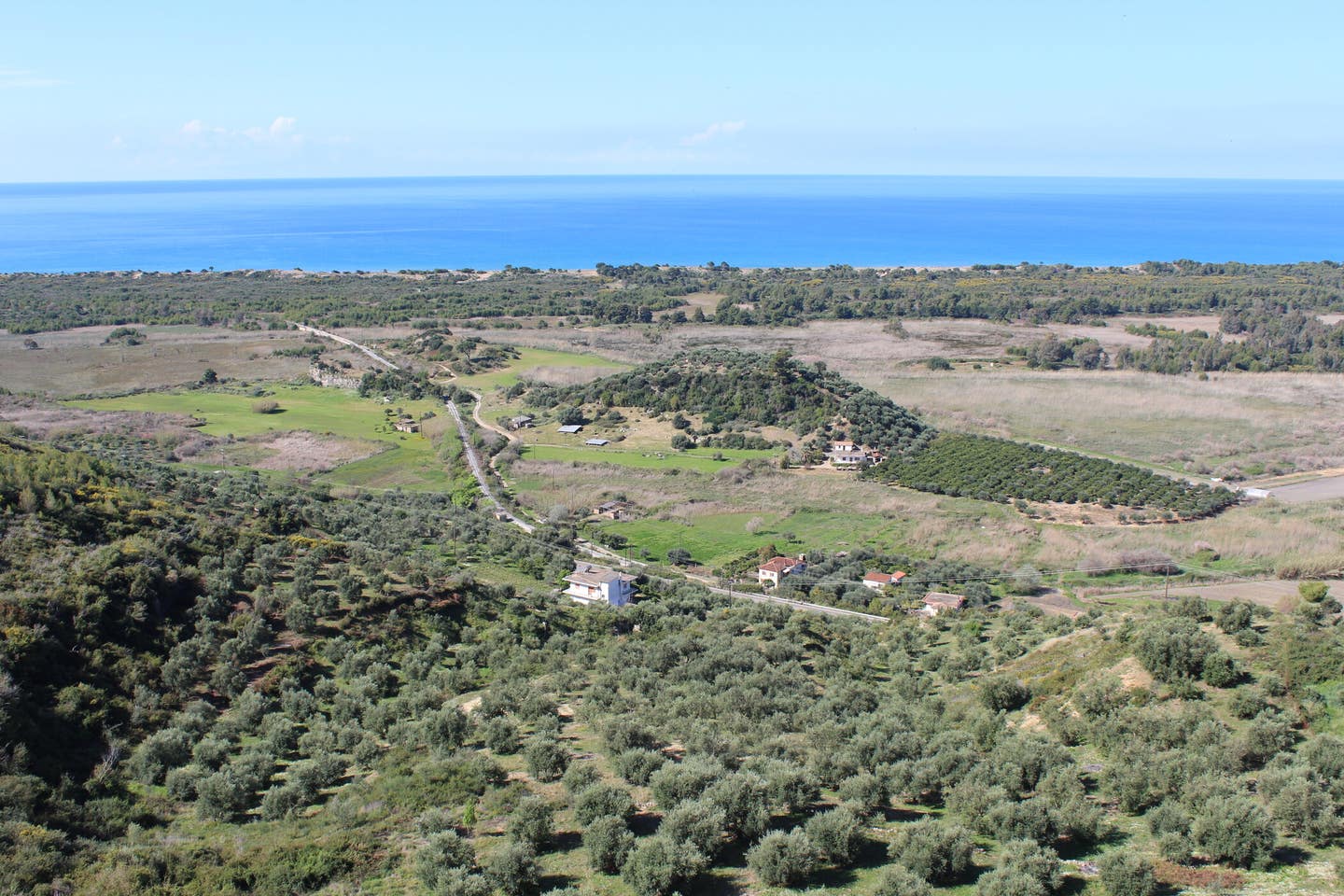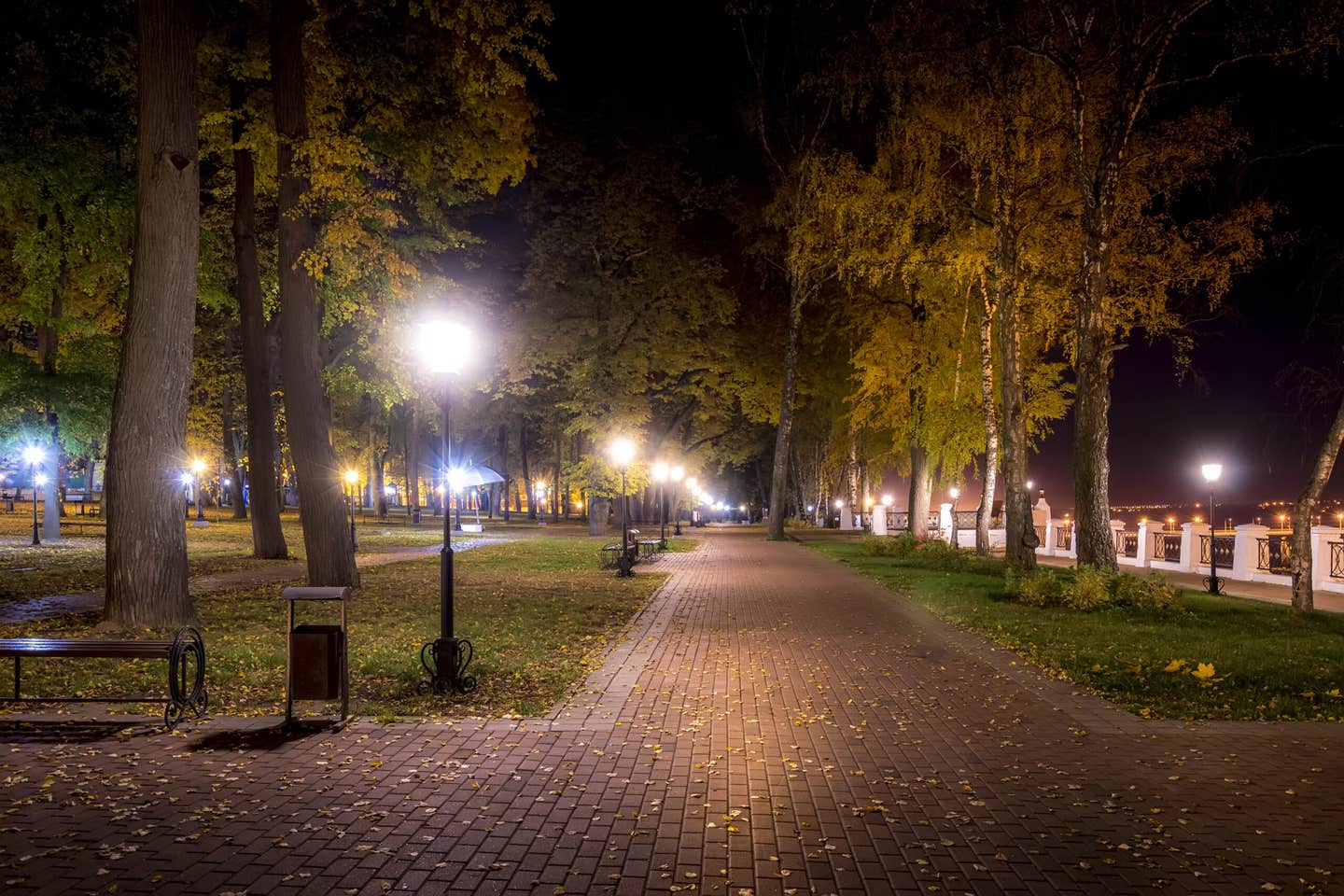Scientists discover 2,600 year-old Greek Temple of Poseidon
Archaeologists working near the coastal village of Samikon have unearthed a monumental temple believed to be dedicated to Poseidon, the god of the sea.

The group of hills named Kleidi from northeast (view from the fortress of Samikon. (CREDIT: OeAW-OeAI/B. Eder)
Archaeologists working near the coastal village of Samikon have unearthed a monumental temple complex in the Western Peloponnese. Researchers believe this site was dedicated to Poseidon, the powerful ancient god of the sea, earthquakes, and horses.
The temple’s discovery sheds light on how deeply Poseidon's worship shaped religious life in this region. It also highlights the cultural and strategic role this god played in ancient Greek society, especially in coastal and seismically active areas.
Poseidon: Ruler of the Oceans
In myth, Poseidon reigned among the twelve Olympians. Sailors both feared and honored him, offering prayers for safe passage and calm seas. To ancient mariners, his favor could mean survival or destruction.
But Poseidon's reach didn’t stop at the waves. Known as the “Earthshaker,” he was thought to cause violent earthquakes. His trident—a sharp, three-pronged spear—served not only as a symbol of power but also as a feared weapon.
Worshippers looked to him for more than protection at sea. He was believed to control storms, provide abundant fish, and guard freshwater springs. His link to horses made him especially sacred in places with strong equestrian traditions.
Temples honoring Poseidon often became major religious centers. Pilgrims from across the Greek world brought offerings, and statues of the god stood tall inside these sacred spaces. Like other temples of the era, they reflected both devotion and the power of myth.
Related Stories
For Poseidon, temples were often located near the sea or other bodies of water, emphasizing his connection to the aquatic world. These sanctuaries also functioned as centers for festivals and rituals, which included sacrifices and processions.
In regions like the Peloponnese, where maritime trade and fishing were crucial, Poseidon’s favor was seen as essential for prosperity. Temples dedicated to him were not only religious hubs but also symbols of a community’s dependence on the sea.
Rediscovering the Poseidon Sanctuary at Samikon
The temple complex at Kleidi-Samikon, first uncovered in 2022, has proven to be one of the most significant archaeological discoveries in recent years.
Initially identified through geophysical surveys, the structure far exceeded early expectations in both size and complexity. Measuring 28 meters in length and over 9 meters in width, it consists of two main rooms, a vestibule, and possibly a rear hall.
Birgitta Eder, head of the Athens branch of the Austrian Archaeological Institute, highlighted the temple’s unique design: “We are looking at an Archaic temple consisting of two main rooms. The ground plan of the temple is unusual. So far we know of no comparable buildings.”
This architectural peculiarity has led to much speculation. Some experts believe the dual-room layout might indicate a temple dedicated to two deities. Others suggest it could have served as a meeting place for the Triphylian League, a coalition of nearby cities with shared religious and cultural practices.
A History Written in Stone and Clay
The temple’s history spans several centuries and reflects the changing tides of Greek culture. Built in the 6th century BCE during the Archaic period, it underwent significant renovations in the 4th century BCE.
Erofili-Iris Kolia, director of the Ephorate of Antiquities of Elis, explained the structural changes: “The old roof tiles were evenly applied as a subfloor for the new floor. They served as insulation against groundwater and to stabilize the floor. Something that still works today.”
Pottery fragments found at the site help date these modifications, linking them to both the Archaic and early Hellenistic periods. These artifacts, along with architectural features, provide valuable insights into the temple’s long history of use and renovation.
Several remarkable artifacts have been uncovered at the site, each offering a glimpse into ancient rituals and practices. One of the most significant finds is a large marble basin, or perirrhanterion, used for ritual purification.
Discovered in fragments, the basin measures over one meter in diameter and was repaired with iron clamps in antiquity. Recent excavations have allowed archaeologists to nearly reconstruct the basin, showcasing its importance in religious ceremonies.
Another fascinating discovery is a bronze plaque bearing an inscription. While the plaque remains too fragile to read, X-ray imaging has revealed parts of the text. “Initial X-ray images show parts of an extensive inscription,” Eder noted, suggesting that once deciphered, the plaque could provide invaluable information about the sanctuary’s history and its role in the community.
The sanctuary’s location near Samikon aligns with descriptions provided by the ancient historian Strabo. In his work Geographica, Strabo described a Poseidon temple situated in a “grove of wild olive trees” near the sea. The temple’s coastal location, close to what was once the ancient fortress of Samikon, underscores its strategic and religious significance.
This sanctuary likely served as a regional hub for the Triphylian League, which comprised several cities in the area. These cities shared a common religious and cultural identity, with the Poseidon sanctuary acting as a focal point for their communal activities.
Ongoing Excavations and Future Discoveries
Recent excavations have revealed additional structures surrounding the temple, including a double-walled boundary believed to provide flood protection. Clearing vegetation around the site has uncovered more clues, and archaeologists hope to find other elements of the sanctuary, such as altars, treasure houses, and pathways.
Funding for the project comes from the Gerda Henkel Foundation, with support from the Austrian Archaeological Institute and the Greek Ministry of Culture.
The collaborative effort involves experts from Austria, Germany, and Greece, highlighting the international interest in preserving and understanding this ancient site.
For centuries, the sanctuary of Poseidon was considered little more than a legend, kept alive through ancient texts and local lore. Its rediscovery has transformed it from myth into history. The temple stands as a testament to the enduring power of human belief and the rich cultural heritage of ancient Greece.
As archaeologists continue to explore the site, they aim to uncover more about the sanctuary’s role in the region’s religious and political life. Each new discovery brings us closer to understanding how ancient Greeks lived, worshipped, and connected with the divine.
Note: Materials provided above by The Brighter Side of News. Content may be edited for style and length.
Like these kind of feel good stories? Get The Brighter Side of News' newsletter.



